It’s the season of festivals, and yesterday I attended the taisai (big festival) of the small shrine of Uetsuki Hachiman in Koriyama, near Nara. The head priest is Rica Saitoh, who harbours plans for setting up a UK shrine. Here she can be seen handing a tamagushi (branch of the sakaki tree) to a representative of the parishioners group.

Tamagushi (sakaki branch)
Why do kami so enjoy sakaki branches? I’ve never really seen a satisfactory answer, but I guess it’s like asking why does God so enjoy fir trees! An obvious point is that they’re both evergreen and therefore represent the life-force, ever present even in the depths of winter. In the case of sakaki, it’s said the reason for their use in ritual follows from the mythology, for in the Cave Myth of Amaterasu decorations are hung upon a sakaki tree in the great ‘ur-festival’ to lure her out from where she is hiding. It begs the question: does ritual follow myth, or is myth made up to justify ritual?
One of the interesting points of the ritual was the use of boys to represent the two guardian figures, ‘sadaijin’ (Minister of the Left) and ‘udaijin’ (Minister of the Right), sometimes found guarding the entrance to Shinto shrines. The figures are dressed in Heian era costume, and in this case the boys sat behind the statues. Here’s a picture of the Minister of the Left, who ranks higher than the Right because of Taoist influence. (Yin ranks higher than Yang, because that which yields overcomes the inflexible. Dripping water will destroy rock in the end, and women will always win arguments with men in the end!)
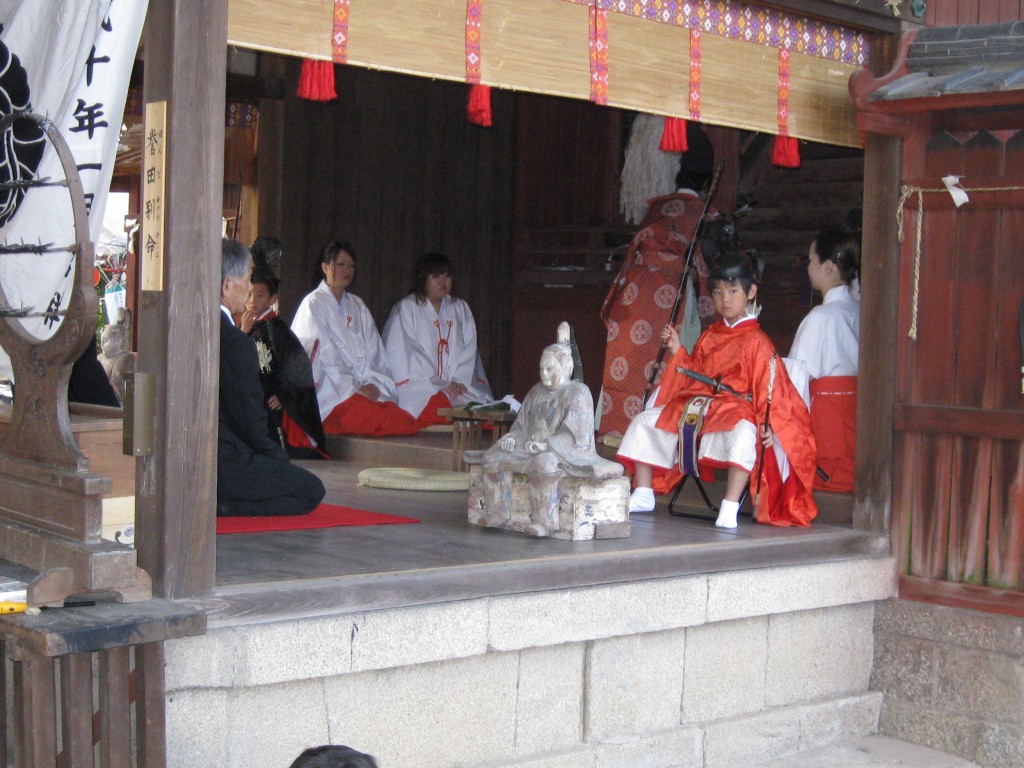
Sadaijin guardians, statue and costumed boy
This is conjecture, but I think Minister of the Left and Right goes back to the building of Chinese-style capitals, with the emperor in the north being served by ministers who were in charge respectively of the two halves of the capital. Even today Kyoto has a Left Ward (Sakyo-ku) and a Right Ward (Ukyo-ku), which are only left and right if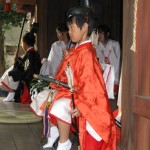 one is looking southwards from the viewpoint of the emperor. Think feng-shui… I imagine that the two principal ministers of the august emperor were adopted by Shinto to serve the august kami by extension, as it were.
one is looking southwards from the viewpoint of the emperor. Think feng-shui… I imagine that the two principal ministers of the august emperor were adopted by Shinto to serve the august kami by extension, as it were.
After the ritual there was a bit of a surprise. Bingo! This good old village hall standby was greatly enjoyed by the local schoolkids, and the wealth of prizes available meant that a good proportion went home happy. I even won a bag myself. After the bingo I was able to chat with the head priest and a miko for a while. The latter is studying kagura dance from Saitoh sensei and told me she was drawn to the spiritual aspect, being a ‘healer’ and ‘channeler’ by profession. Perhaps miko shamanism is experiencing a New Age resurgence.
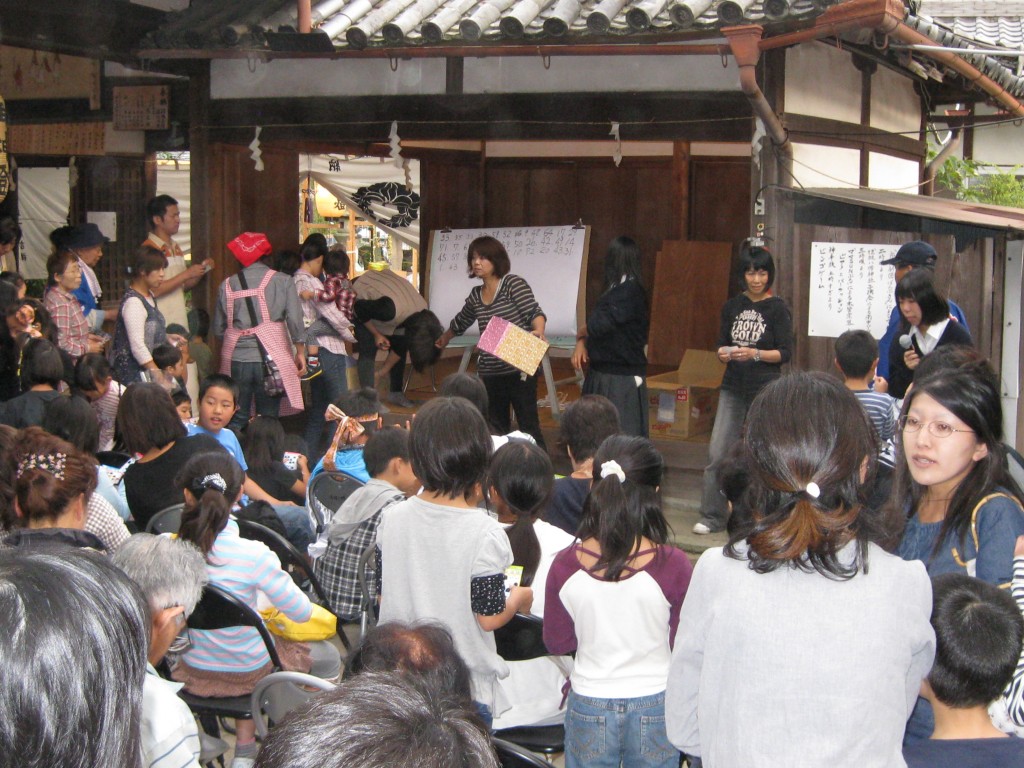
A game of Bingo keeps the youngsters enthralled
There were a few stalls set up in the shrine grounds, and while eating some oden I noticed a stone marker for the ‘Hyakudo mairi’ (100 visits) of Shinto shrines. It’s a form of pilgrimage, or walking prayer, which sometimes involves walking 100 times between fixed points. In this case it involves circling the shrine building 100 times. I’ve seen the practice done at a temple in Kyoto, with sutra muttered earnestly, though I’ve yet to see anyone do it at a Shinto shrine. Perhaps, like me, most people prefer doing their pilgrimages up leafy hills rather than going round and round in circles… There’s enough of that in everyday life, after all!
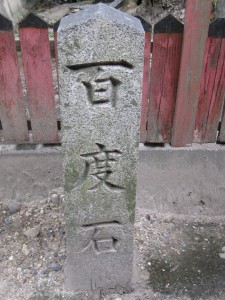
Hyakudo ishi, the stone marker to complete your hundred rounds of the shrine
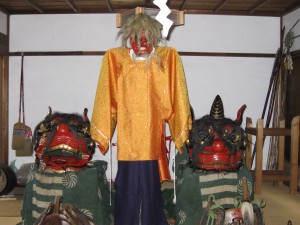
All dressed up and nowhere to go. Costumes ready for the shrine procession the following day.

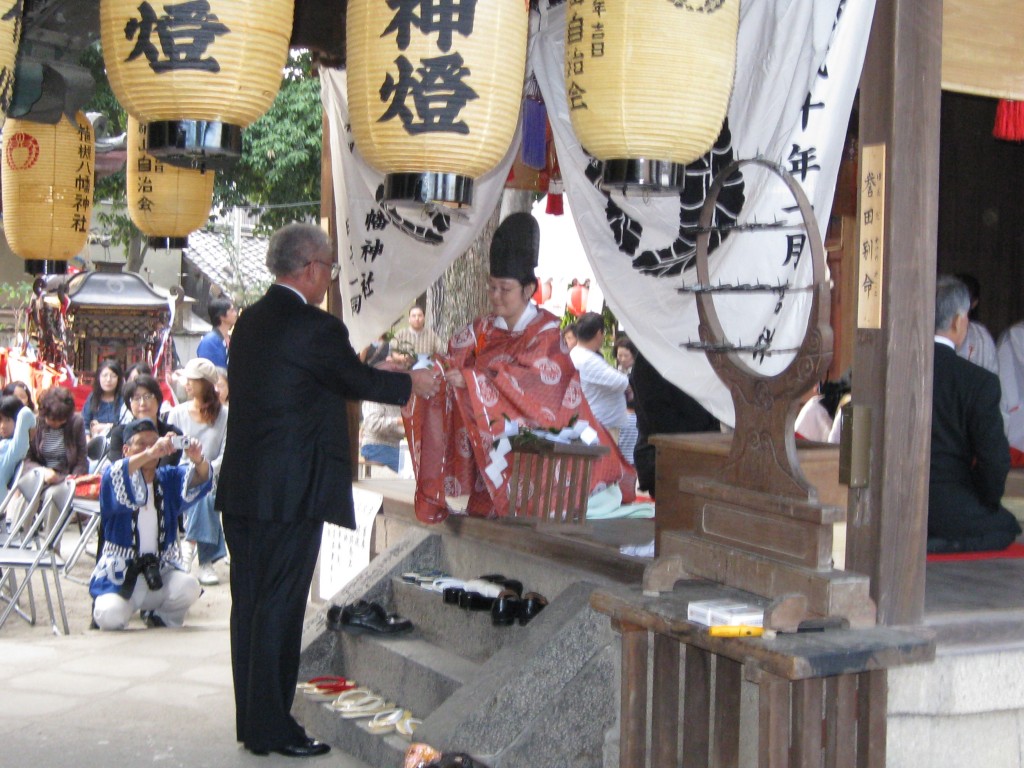
Hi John,
Sakaki branches seem to everywhere these days. A question. How common is it to have a female priest?
Hi Paul…
Female priests are roughly 10% of the total, which is around the 20,000 mark. Of the two thousand female priest, most are connected with Shinto households in some way…. either wives, widows or daughters of priests. From what I gather, the number of female priests is currently on the rise.